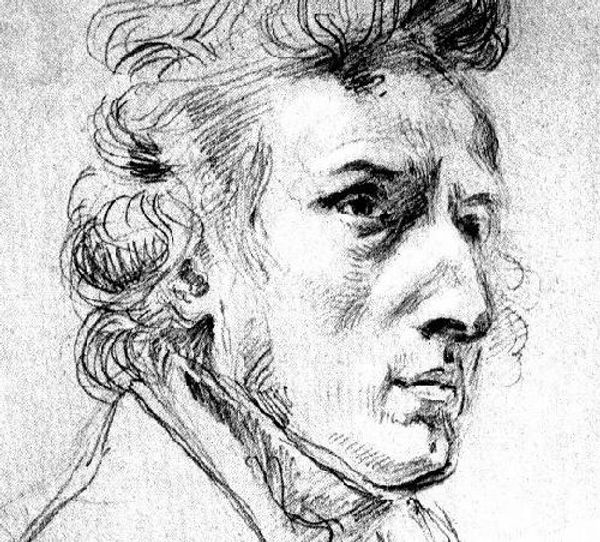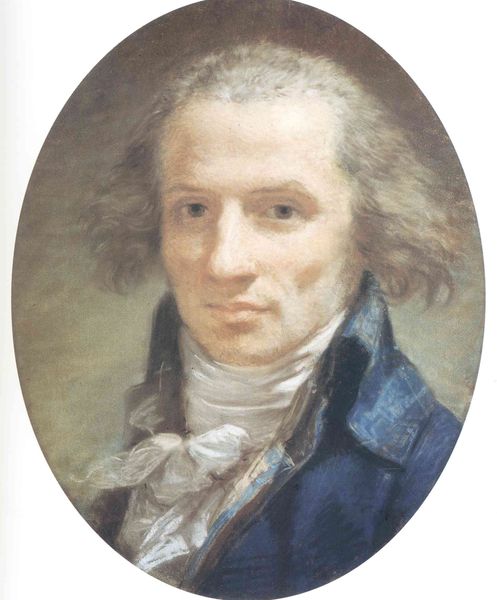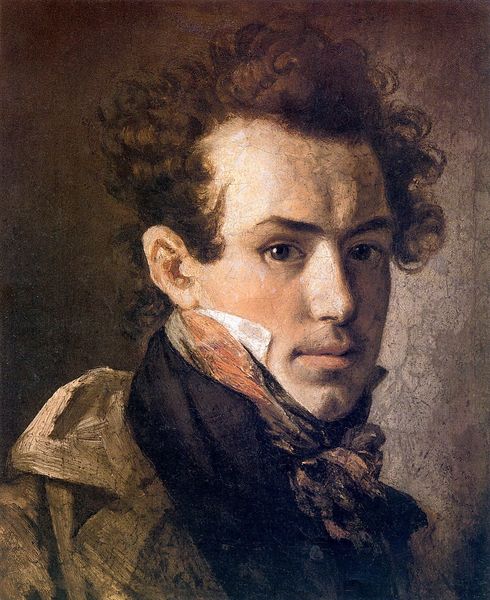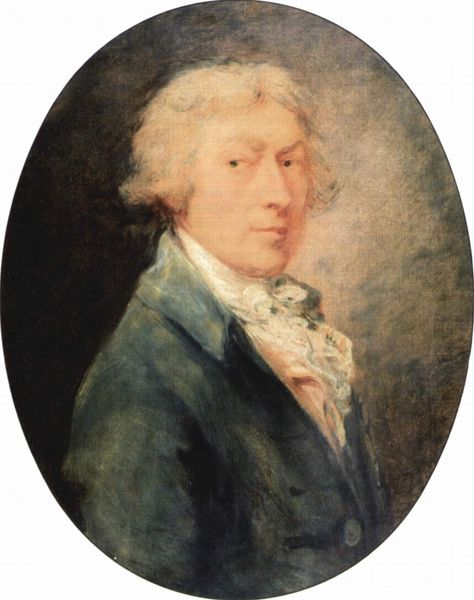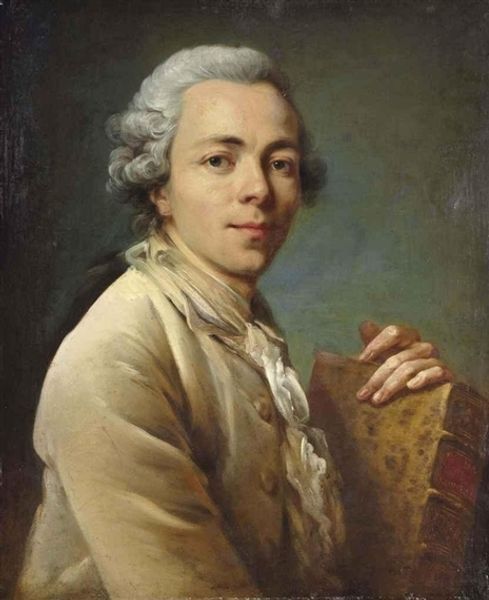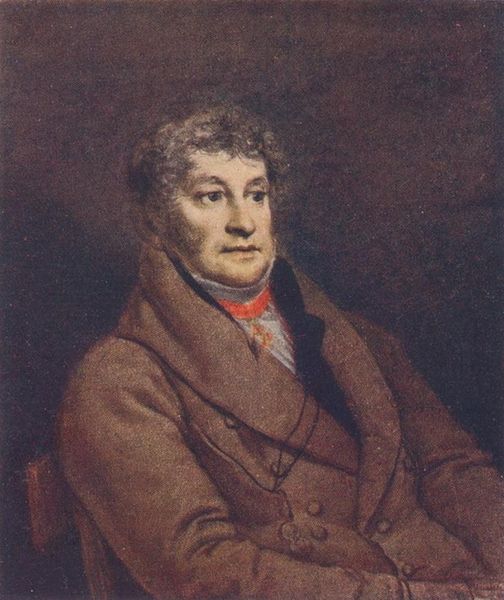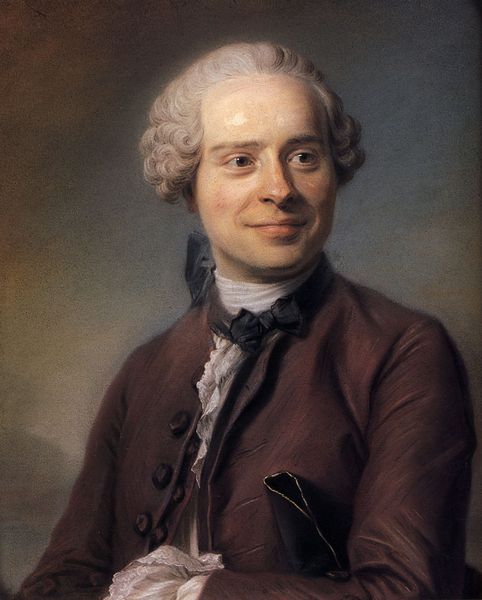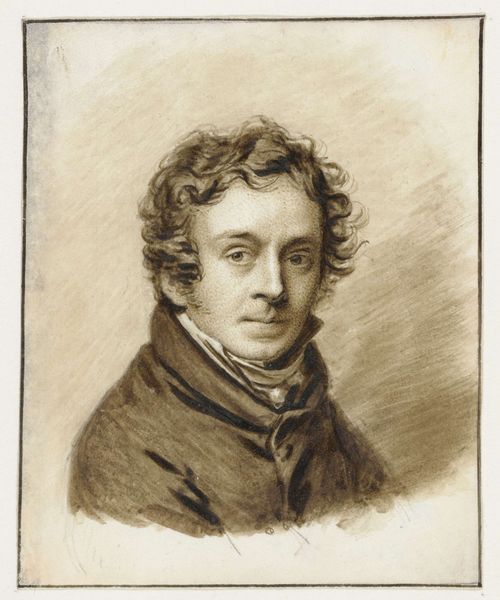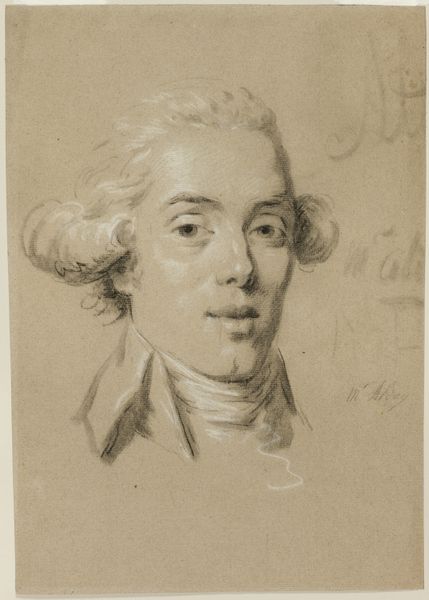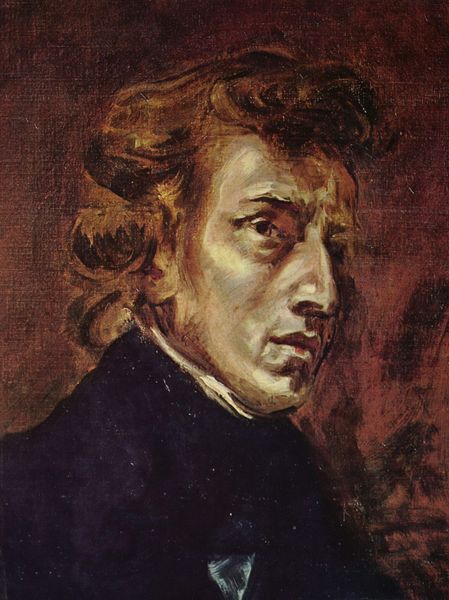
painting, oil-paint
#
portrait
#
neoclacissism
#
self-portrait
#
painting
#
oil-paint
#
academic-art
Dimensions: 64 x 53 cm
Copyright: Public domain
Curator: Here we have Jacques-Louis David's Self-Portrait, painted in 1791. It’s currently held at the Uffizi Gallery in Florence. Editor: He looks rather serious, wouldn't you say? The slightly melancholic expression is quite striking, intensified by the contrast between the dark backdrop and his illuminated face. There's a restrained energy too, as if he's carefully observing the world even as he scrutinizes himself. Curator: That sense of observation is apt. Painted in oil, the level of detail that David achieves is remarkable. Note how he meticulously renders the texture of his coat and the subtle highlights in his hair, drawing the viewer’s attention to the artist’s skills and his standing as a learned member of the Academy. And he is showcasing Neoclassical values, drawing inspiration from antiquity through the style, themes, and restrained presentation. Editor: Indeed, the details draw you in. That loose white cravat, juxtaposed with the implied geometry of his coat...even the almost obscured glimpse of what seems to be a striped waistcoat all contributes to his image as a learned gentleman of refined, if rebellious taste. Curator: Remember that in the late 18th century, portraiture wasn't just about capturing a likeness; it was a declaration of social status and an engagement with the politics of display. We are getting a curated view of himself. The carefully constructed composition reflects David's aspiration to be seen as both an artist of the people and a respected member of society. The materiality of the portrait becomes a vehicle for this message, turning paint and canvas into a social document. Editor: Considering he painted this on the cusp of the French Revolution, those understated details might point to the complex symbolism involved in how David sought to depict himself as both an insider and something of an outsider at this pivotal time in European history. Curator: Precisely! It’s a potent visual declaration that uses the physical qualities of the art to speak to the larger political and social structures. Editor: So, next time you observe this self-portrait, remember that behind the artist's gaze is an exchange between the visual codes and the revolutionary sentiments. Curator: And beyond its revolutionary implications, consider the tangible processes and materials that produced it. Thank you for your insights.
Comments
No comments
Be the first to comment and join the conversation on the ultimate creative platform.

